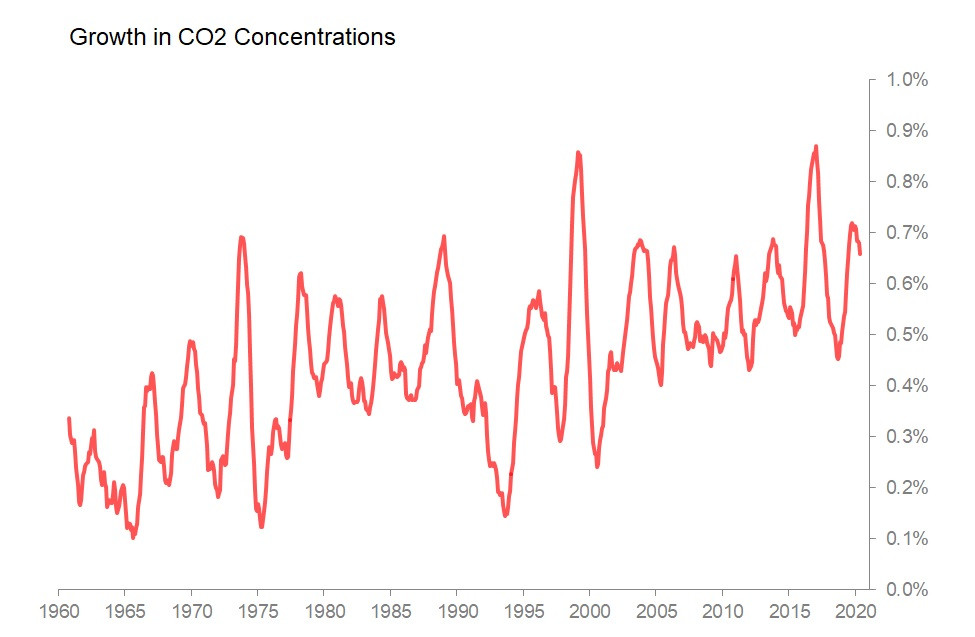Jun 09•3 min read
Climate Muscle Memory Gym - May 2020
If there's any upside to coronavirus' global economic coronary, it is widely held to be the helpful fall in CO2 emissions, held by enthusiasts to show the way to 'tackle climate change'. But the data tells us fairly unequivocally that if there is to be any measurable positive impact on global CO2 concentrations, we'd have to follow the coronary with a very lengthy induced economic coma.
The Global Carbon Project has marshalled the altered patterns of energy demand around the world to conclude that by early April 2020 daily global CO2 emissions were down 17% (1SD error bars 11% to 25%) from mean 2019 levels. It calculates: 'The impact on 2020 annual emissions depends on the duration of the confirement, with a low estimate of minus 4% (minus 2% to minus 7%) if prepandemic conditions return by mid-June, and a high estimate of minus 7% (minus 3% to minus 13%) if some restrictions remain worldwide until the end of 2020.'
It also believes: 'Government actions and economic incentives postcrisis will likely influence the global CO2 emissions path for decades.'
Or not.
But so far this moderation in CO2 output has had no measurable impact on anything. The Mauna Loa measurements of CO2 concentrations show concentrations up 0.4% mom in April and 0.2% in May - rises which are tightly in line with the long-term seasonal trends. Overall, the long-term trend is still one of a very slightly accelerating trend in the rise of CO2 concentrations.

Meanwhile, trends in global temperatures are also unchanged, and still worrying. The sharp spike since Sept 2019 in land and land/ocean temperatures recorded in the Goddard series showed negligible retreat in March and April, so the idea that world temperatures have climbed back to the El Nino--assisted highs of 2016 continues to look likely, to me at least.
The data is not so clear for the satellite-recorded lower-troposphere series, where by May the 0.34 degree result was a clear pull-back from the 0.76 degree spike seen in February. Even so, although May's reading is relatively low relative to very recent history, it still leaves the new 'normal' level higher than we experienced between 2012 and mid-2019.

As for the other main greenhouse gases, the latest concentration readings are from February:
Methane: The trend rise in methane concentrations is slowing very graduallym and by February, the concentrations had fallen 0.2% from November's high, but were still up 0.5% yoy at 1,873.7 parts per billion.
Nitrous Oxide: Here too the trend rise in global concentrations is slowing gradually, with no significant rise seen since November. In fact, by February, concentrations were up only 0.2% yoy at 332.6 parts per billion.
Sulphur Hexaflouride: the trace gas which makes up for its rarity (only 10.15 parts per trillion) by its tremendously powerful greenhouse characteristics. Here too the trend rise in concentrations is slowing, but from a relatively high rate. By February, concentrations were still rising 3.4% yoy, with the 12m rise of 3.5% the slowest seen since the measurements started in 1998.
